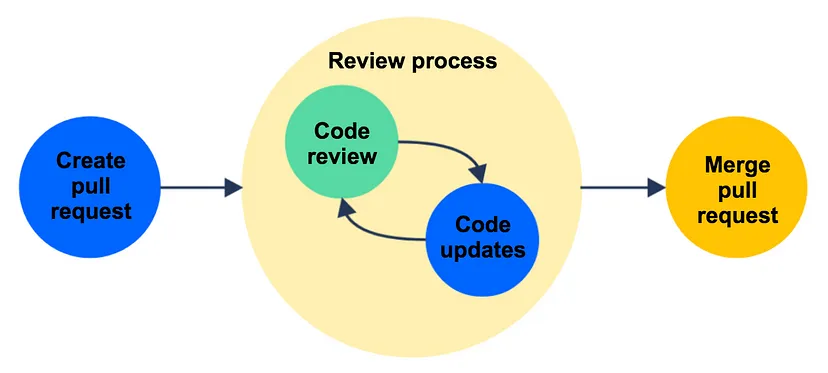Pull Request (PR)
Pull Request (PR)
What is Pull Request (PR)
Definition:
A pull request (PR) is a mechanism used in version control systems, such as Git and GitHub, to propose changes to a codebase, review those changes, and merge them into the main branch. It serves as a formalized workflow for collaboration among developers, enabling transparent communication, code review, and quality control within a development team.
Analogies:
Think of a pull request as a collaborative editing process for a shared document. Just as multiple authors review, suggest changes, and finalize a document before publication, developers use pull requests to review, discuss, and refine code changes before integrating them into the main codebase.
Usage and Examples:
- Creation of a Pull Request: A developer completes a feature or fixes a bug in a separate branch of the code repository. They then create a pull request, detailing the changes made and the purpose of the update.
- Code Review Process: Other team members or reviewers are notified of the pull request and review the proposed changes. They provide feedback, ask questions, and suggest improvements directly within the PR interface.
- Continuous Integration (CI) Checks: Automated tests and code quality checks are triggered upon the creation of a pull request to ensure that the proposed changes adhere to coding standards and do not introduce regressions.
- Discussion and Iteration: Developers discuss the proposed changes within the context of the pull request, addressing feedback, making necessary adjustments, and iterating on the code until consensus is reached.
- Merge and Deployment: Once the pull request has been approved and all checks pass, the changes are merged into the main branch of the repository. Subsequently, the updated code is deployed to the production environment.
Why Pull Requests Matter:
- Code Quality Assurance: Pull requests serve as a mechanism for peer review, allowing team members to catch errors, identify improvements, and maintain code quality standards before changes are merged into the main codebase.
- Knowledge Sharing and Collaboration: Pull requests encourage collaboration and knowledge sharing among team members by providing a platform for discussions, sharing insights, and learning from each other’s code.
- Transparency and Accountability: Pull requests offer transparency into the development process by documenting the evolution of code changes, discussions, and decisions made throughout the review process. They also help establish accountability for code modifications.
- Risk Mitigation: By subjecting proposed changes to rigorous review and testing before merging them into the main branch, pull requests help mitigate the risk of introducing bugs, regressions, and compatibility issues into the codebase.
Key Components of Pull Requests:
- Title and Description: Clearly articulate the purpose, scope, and context of the proposed changes to provide reviewers with sufficient context for understanding the pull request.
- Code Diffs: Visual representation of the changes made to the codebase, highlighting additions, deletions, and modifications at the file and line level.
- Reviewers and Assignees: Specify individuals responsible for reviewing and approving the pull request, ensuring that the changes are thoroughly assessed and validated.
- Comments and Discussions: Enable threaded discussions and comments within the pull request interface to facilitate collaboration, address feedback, and resolve issues.
Key Takeaways:
- Pull requests are a fundamental component of modern software development workflows, enabling collaboration, code review, and quality assurance within development teams.
- By fostering transparency, accountability, and knowledge sharing, pull requests contribute to the overall quality, stability, and maintainability of the codebase.
- Leveraging pull requests effectively empowers teams to iterate faster, minimize errors, and deliver high-quality software solutions that meet user requirements and expectations with confidence.





